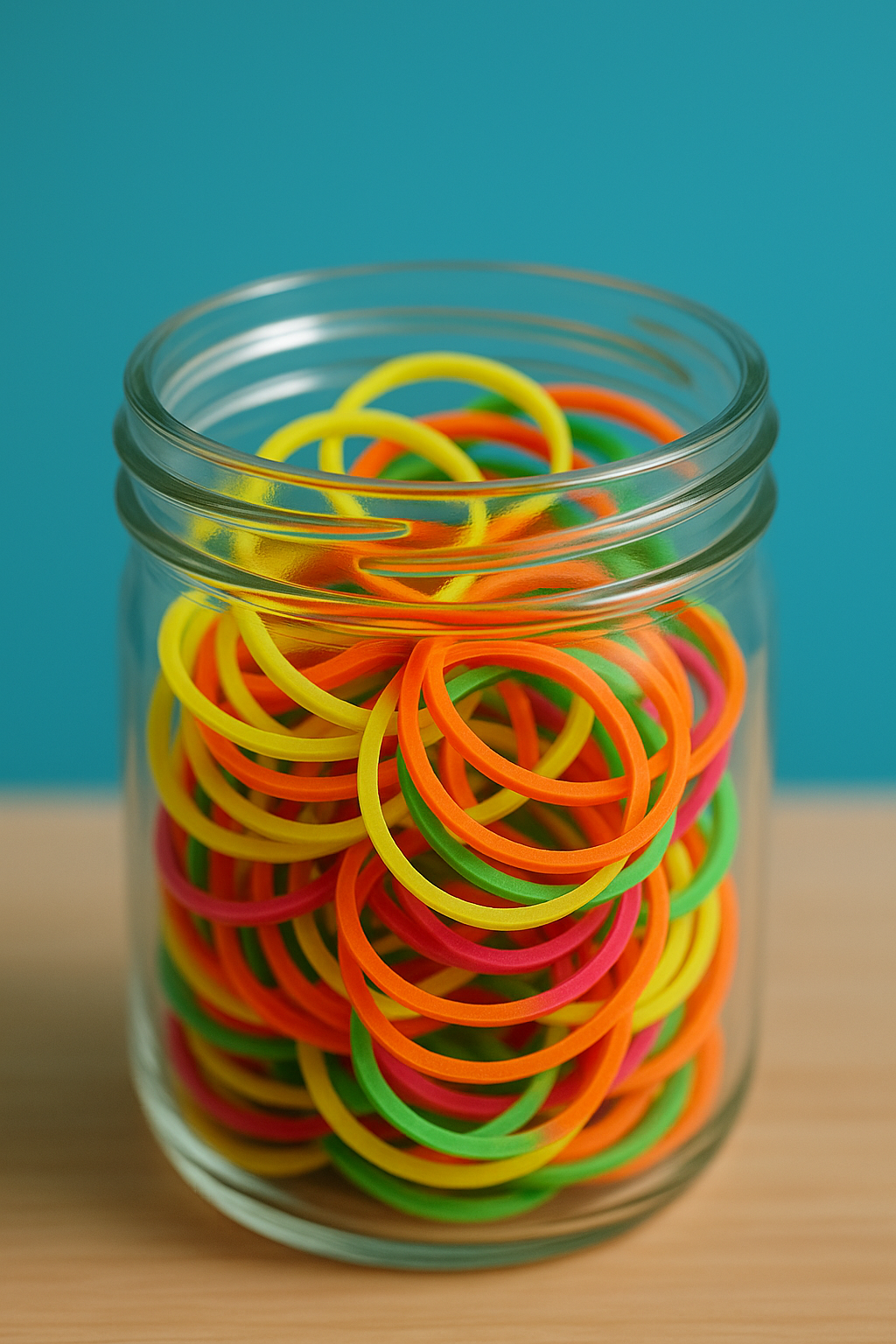Natural vs. Synthetic: The Rubber Band Material Debate
In the world of flexible fasteners, a fundamental choice dictates the performance, durability, and environmental impact of the final product: the choice between natural and synthetic rubber. To the casual user, a rubber band is just a rubber band. But for professionals in packaging, agriculture, and industrial sectors, the difference between natural rubber and synthetic rubber is critical. This decision isn’t just a matter of preference; it’s a strategic choice that affects everything from UV resistance and temperature stability to cost and ecological footprint.
This great debate over rubber band materials lies at the heart of our industry. Each type comes with a distinct set of properties, engineered for different challenges and environments. Are you bundling newspapers for morning delivery, securing equipment on an outdoor construction site, or packaging food products for cold storage? The answer to this question will point you toward the ideal material. At RuBands, we harness the power of both natural and synthetic compounds to provide a comprehensive range of solutions. This guide will explore the origins, strengths, and ideal applications of each, empowering you to make the most informed decision for your specific needs.
The Original Champion: The Case for Natural Rubber
Natural rubber is the classic, time-tested material that has served as the industry standard for over a century. It’s a remarkable natural polymer with a performance profile that synthetics often seek to imitate.
What is Natural Rubber?
Harvested as a milky-white liquid called latex from the Hevea brasiliensis tree, natural rubber is a renewable and sustainable resource. The latex is collected through a process similar to tapping maple trees for syrup, which does not harm the tree. This raw latex is then processed, purified, and vulcanized to create the familiar elastic material we all know.
Key Advantages of Natural Rubber:
- Superior Elasticity and Tensile Strength: At a molecular level, natural rubber is composed of very long, entangled polyisoprene chains. This structure gives it an exceptionally high tensile strength and a remarkable ability to stretch to many times its original length and snap back, a property known as high resilience. For general-purpose applications, its performance is the benchmark.
- Excellent Grip: Natural rubber has a high coefficient of friction, giving it a slightly tacky, grippy surface. This is a significant advantage when bundling smooth items like papers, plastic bags, or bundled wires, as it helps prevent slipping.
- Tear Resistance: It possesses impressive resistance to tearing and abrasion, making it durable for tasks that involve repeated stretching or friction.
- Eco-Friendly Profile: As a plant-based, renewable resource, it is the preferred choice for environmentally conscious consumers. High-quality natural rubber products, like those from RuBands, are fully biodegradable. When disposed of, these biodegradable rubber bands will decompose over a relatively short period, returning to the earth without leaving behind harmful microplastics.
Ideal Applications:
Natural rubber is the undisputed king of general-purpose applications. It excels in environments that are not subject to extreme temperatures or prolonged UV exposure.
Best for: Office and stationery use, mail carriers, newspaper bundling, light industrial packaging, agriculture (for bundling produce), and everyday household tasks.
The Engineered Specialist: The Power of Synthetic Rubber
While natural rubber is a fantastic all-rounder, certain modern applications demand properties that nature cannot provide. This is where synthetic rubber comes in. Synthetics are man-made polymers, engineered in a lab to exhibit specific characteristics and overcome the limitations of their natural counterpart.
What is Synthetic Rubber?
Synthetic rubber is not one single material but a broad family of elastomers derived from petroleum byproducts. Each type is formulated to excel in a specific environment. Some of the most common types used for banding applications include:
- EPDM (Ethylene Propylene Diene Monomer): This is the outdoor champion. EPDM is specifically engineered for outstanding resistance to ozone, UV radiation from sunlight, and extreme weather conditions. Where a natural rubber band would quickly become brittle and crack when left outdoors, an EPDM band remains flexible and strong.
- Silicone: The master of temperature extremes. Silicone bands remain stable and flexible in both deep-freeze conditions and high-heat environments. They are also non-toxic and inert, making them the material of choice for food-grade and medical applications.
- Neoprene: Known for its toughness and resistance to chemicals, oils, and solvents. It is often used in industrial settings where exposure to such substances is common.
Key Advantages of Synthetic Rubber:
- Superior Environmental Resistance: This is the primary reason for choosing synthetic rubber. Its ability to withstand sunlight, ozone, moisture, and extreme temperatures is unmatched.
- Customizable Properties: Because it’s man-made, its properties can be tweaked. Manufacturers can adjust the formula to enhance a specific characteristic, whether it’s chemical resistance, temperature range, or even color stability.
- Consistency: The manufacturing process for synthetic rubber allows for a very high degree of consistency from one batch to the next.
Ideal Applications:
Synthetic rubber is the problem-solver for demanding and specialized tasks.
Best for: Outdoor use (securing items on vehicles, agriculture, construction), cold storage facilities, food processing plants (food-grade silicone), industrial workshops with chemical exposure, and any application requiring long-term durability in a challenging environment.
Conclusion: Making the Right Choice for Your Application
The debate between natural rubber and synthetic rubber isn’t about which one is definitively “better”—it’s about which one is right for the job at hand. Natural rubber offers unparalleled elasticity and an eco-friendly profile for everyday tasks. Synthetic rubber provides engineered resilience for the toughest environments. Making the wrong choice can lead to failed applications and unnecessary waste, while the right choice ensures efficiency, safety, and reliability.
At RuBands, we recognize the distinct advantages of both rubber band materials. That’s why we offer a comprehensive selection, from our premium, biodegradable rubber bands made from sustainably sourced natural latex to our robust, weather-resistant synthetic bands. Our team of experts is always ready to analyze your needs and guide you to the perfect material, ensuring you get a product that is not just fit for purpose, but perfectly optimized for it.



